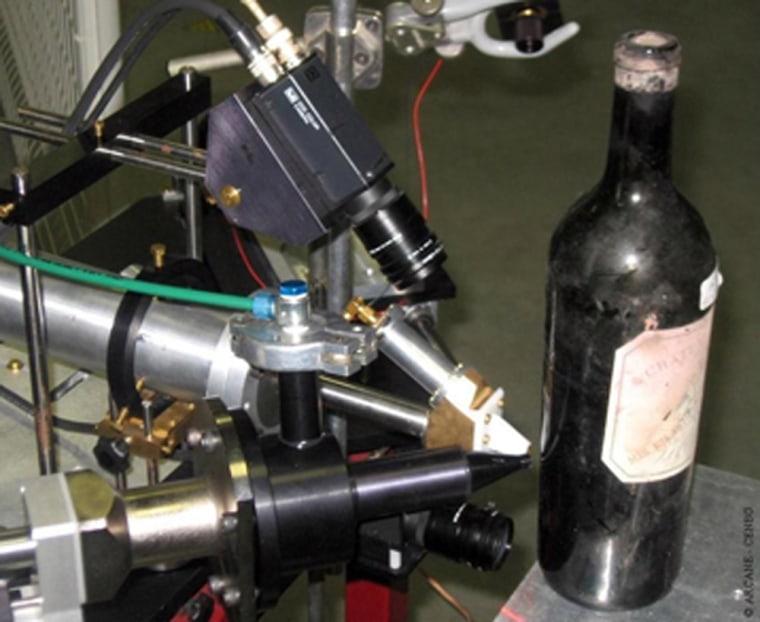French scientists have devised a way of using particle accelerators to authenticate vintage wines, one of France's top research bodies said this week.
The new method tests the age of the glass in wine bottles by analyzing X-rays emitted when the bottles are placed under ion beams produced by a particle accelerator, the National Center for Scientific Research, known by the French acronym CNRS, said in a statement. The results can be compared with a database containing detailed information on 80 bottles from the Bordeaux region from the 19th century to the present day.
Such tests can help indicate the vintage of many wines, CNRS said.
"This enables the age of bottles and their origin to be verified and thus a vintage to be authenticated, a bit like the signature of a painter on a masterpiece, all without opening the bottle and without affecting in any way the content," the center said in its statement.
"Authentication is possible due to the complexity of the processes of glass manufacture which have evolved over time and to the variety of production centers which give each object a characteristic 'signature' made up of many elements," CNRS said.
Particle accelerators take a particle, such as an electron, speed it up to near the speed of light and smash it into an atom to discover its internal workings.
The new test extends existing radioactivity tests on the actual wine itself, which are currently incapable of identifying vintages prior to 1950.
The test was developed in cooperation with a London-based wine dealer, The Antique Wine Company.
